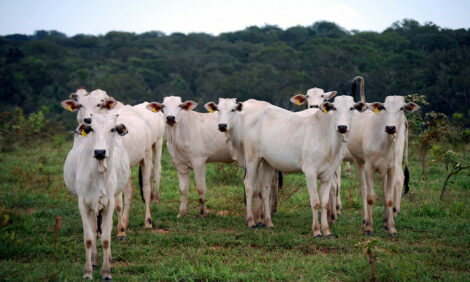



Processor Chief Highlights Beef Industry Challenges
UK - Cull cows and dairy origin beef could be vital supplies of beef - that is the conclusion of Brian Pack, Chief Executive of ANM Group.Speaking at the 50th Annual Conference of the Ulster Grassland Society in Belfast, Mr Pack put forward to delegates his views of the beef industry, highlighting the current decline in the UK prime beef market and the rebalance in overall beef production from over thirty month animals, in particular cull cows.
ANM Group, through two of its companies, Aberdeen & Northern Marts and abattoir business, Scotch Premier Meat ltd, is involved in many aspects of the industry and this gives the firm a holistic view of beef production.
In his speech, Mr Pack highlighted the challenges facing the industry with the decrease in stock numbers and, in particular, the decline in UK prime beef production over the past few years. He also stressed that both breeders and those further along the beef supply chain should view the cull cow, not as a waste product, but a commodity which should be "well produced and marketed – an important role for the auction mart – not only in terms of the individual's profitability, but for the overall supply of beef".
With regard to dairy origin beef, Mr Pack noted that dairy calf registrations had risen greatly in the past few months, due largely to the price of grain making cereal beef more profitable.
He suggested that a beef cross animal out of a dairy cow produced in the traditional fashion, and slaughtered at around 20 months, could help alleviate supply problems.
Backing this viewpoint, Mr Pack pointed to the Northern Ireland Red Meat Industry Taskforce Report.
One of the key findings of this report suggests that the suckler origin beef model cannot provide full economic returns regardless of production efficiency.
Mr Pack explained how he appreciates the superb end product the suckler model gives, in addition to the image and environmental benefits of the method, but he has reservations about the economic returns offered.
He added that he was keen to see suckler beef production preserved and subsidised directly but that this should be balanced against increased efficiency and that producers should not get "trapped back in the numbers game". Mr Pack also commented on the current jargon of "value with values", suggesting that whilst consumers are feeling the pinch, there is still a desire to buy produce which has farm assurance, has been reared under strict welfare standards and has providence, particularly local. This is reflected in the figures quoted from the comparable 12 weeks ending 2 November 2008, which showed beef roasting cuts’ sales had fallen by 15.8 per cent whilst mince sales had risen by 5.7 per cent with overall volume of beef consumed down two per cent. Wholesale customers of Scotch Premier Meat, generally suppliers to restaurants, have, reported Mr Pack, also felt the effects of the current financial state with the abattoir business reporting the hitherto unprecedented situation of a surplus of fillets.
He explained that demand had switched to forequarter cuts and anything under £3 per kilogram which has resulted in a shift in carcase value with the forequarter increasing from 30 per cent of total value to around 40 per cent.
The slowdown in the economy and the rate of Sterling against the Euro has brought benefits to the UK livestock industry including Scotch Premier Meat and Mr Pack was keen to stress that the company have seized upon the favourable rate for exports.
He pointed to the fact that the UK very quickly moved from having one of the highest cattle prices in Euros per kilogram deadweight in Europe to one of the lowest against the UK price in pence per kilogram deadweight rising steadily over the same period.
However, Mr Pack also explained that he had understanding of the grief felt in the Irish Republic where producers were experiencing the reverse of UK farmers with regard to export.
TheCattleSite News Desk


